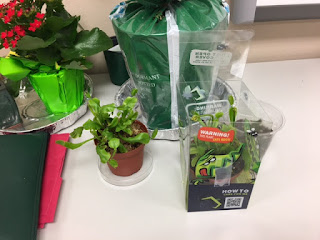Saturday, March 4, 2017
Experimental Design: Part 1: The beginning of a Four week Investigation
Scientists use experimental design to set up and organize their research. The scientific method is just one way in which collecting data, observing, and analyzing results can be used to design further investigation and research. Experimental design includes setting up an experiment, controlling the variables, and implementing concise steps to collect data. Then the scientist or experimenter will compare, contrast results with those of the control group. Finally, forming conclusions based on results and sharing the data.The steps that students must follow are: form a hypothesis, conduct some background research, design and experiment. This is step one of our 4 week experimental design project.
My students are researching plant tropisms. How do plants move? What kinds of stimuli cause a plant to respond? How do they respond? Each group chose one tropism or turgor pressure and are at the design stage of their experiment, with implementation and set up happening Monday and Tuesday. It is exciting to sit down with each team and talk through their design. They need to make sure to have controlled variables, a control group and decide before any building or creation the independent and dependent variables and write a solid hypothesis. This will be a lengthy experiment and I will write more blogs about it as we work our way through the observations and data collection. This first plants to arrive are two Venus Flytraps. So cute. Can't wait to see them in action: thigmotropism at work.
Subscribe to:
Post Comments (Atom)
#OneWord2023- Plant
Humus, soil, Earth- the substance that brings fertility and nourishment. Home to decomposers, revitalizers and care-givers. The foundation f...


No comments:
Post a Comment